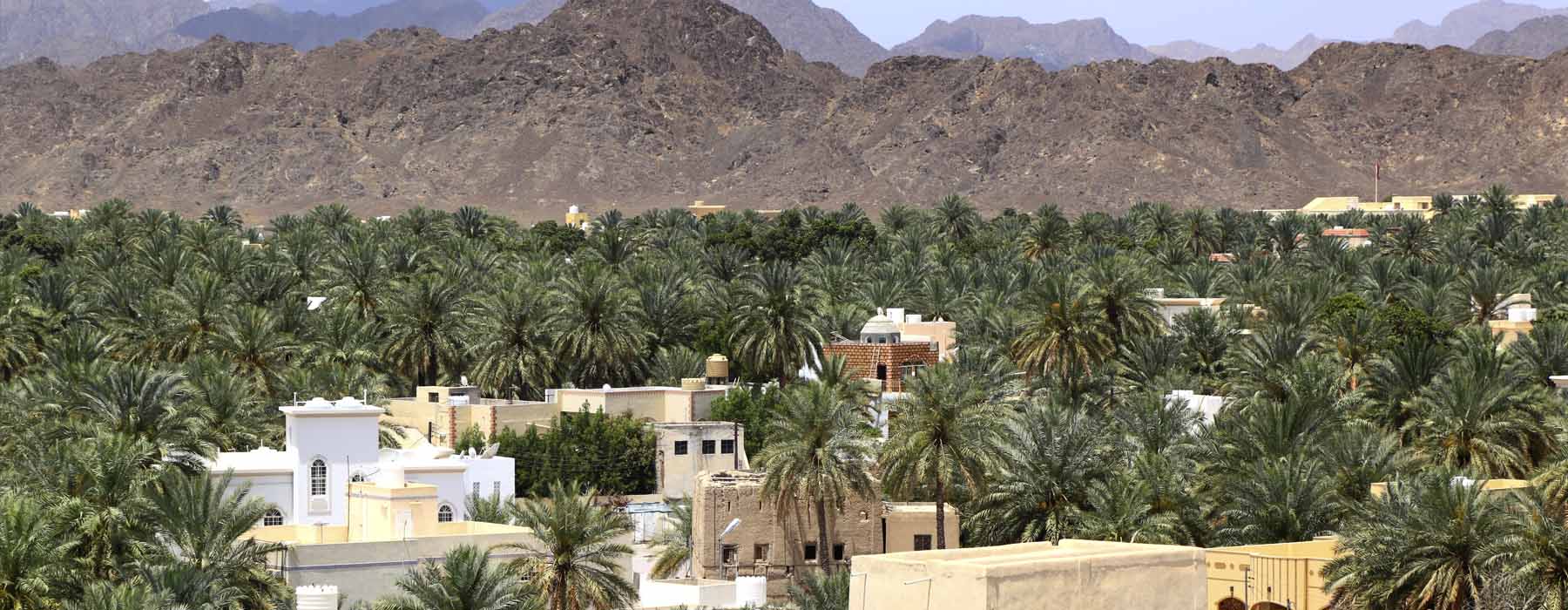January
February
March
April
May
June
July
August
September
October
November
December
Sitting in the southeast of the Middle East’s Arabian Peninsula, Oman nestles between the United Arab Emirates, Saudi Arabia and Yemen. It is subject to two main climates: in the north and east, it is strictly Mediterranean, while in the south and west, temperatures feel more tropical, with a monsoon season (known as Khareef) lasting from June to September. This means there are just two seasons in Oman, meaning no chance of an 'intermediate' spring or autumn. With a long eight-month summer (March to October) and a short and mild winter (November to February), Oman is an almost all-year-round destination. However, depending on where you are in Oman, the climate can vary. The best time to visit Oman is generally between October and April. Temperatures are very pleasant, with a maximum average of 28°C, meaning that you’ll avoid the blistering summer heat and see very little rainfall. Read on for a rundown of the best time to visit Oman.
The Desert Plain and Empty Quarter
Oman's desert plain and Empty Quarter occupies much of the country’s centre. It is known to have a warmer and drier climate than other regions with temperatures above 25°C. However, unlike Oman’s ‘true’ deserts, which see hot days and cold evenings, temperatures here remain high all day, with an average of 20°C. The heat becomes much more intense between April and October, where it's not uncommon to see temperatures exceeding 50°C. So, if it’s balmy (but not too balmy) conditions you’re after, the best time to visit Oman’s desert plains is between October and March.
The Mountains of Oman
Most of Oman's mountains lie in its north. There are two notable ranges: the Hajar Mountains in the north, which are the most well-known, and the Dhofar Mountains in the south, towards Salalah, which are less imposing but equally beautiful. Both ranges are bordered by coastal plains. This part of Oman enjoys a more temperate climate. Temperatures remain cool during the day, and at night they can fall to 5°C. There is some humidity, with around 11.8 inches of rain on the slopes and more on the peaks (19.6 inches of rain per year). Temperatures in the mountains are cooler than the rest of the country. In fact, it’s not uncommon to see frost and even snow in the heart of the mountains during December and January. If you’re attempting to scale Jebel Shams (and crampons aren’t for you), make your summit either in March and April or September and October when highs are a comfortable 24°C and nights sit at 10°C.
The Coastal Plain
Oman's coastal and northern areas have warm and arid climates. The summer months are particularly humid, especially in the north, which are the country’s most inhabited regions. Muscat, its capital, is one of the hottest cities in the world. And while the monsoon season (known as Khareef) only occurs in the south of the country, Muscat does see its fair share of showers, especially in November and December and March and April. If you’re after a slice of scorching sun, you’re best to head to Muscat in June when temperatures teeter at 40°C. But if balmy breezes are more your thing, your best time to visit Oman is from March and April – especially as festival fever tends to get underway with Eid al-Fitr. As you move closer to the coast, you’ll find the hottest months are April to October. The air is hot and the wind is dry and rainfall is generally quite low (close to four inches per year). Winters are relatively mild and unlike the south, the north enjoys regular sunshine all year round.
The Dhofar region
In the Dhofar region of southern Oman, the climate is milder. There is also - unique to Dhofar- a monsoon season from June to September, that sees an average annual rainfall of more than 29 inches. Despite the chance of downpours, it is actually a popular period to travel because temperatures rarely exceed 32°C during the day. For diving enthusiasts, a trip to the Dhofar region is ideal in April or October as visibility is at its best.



